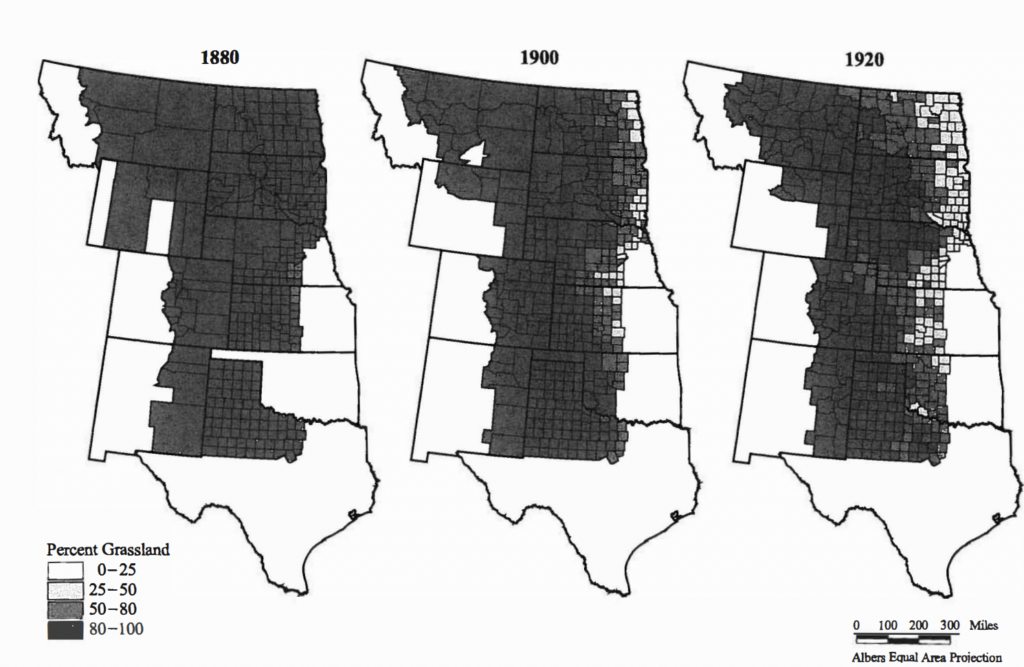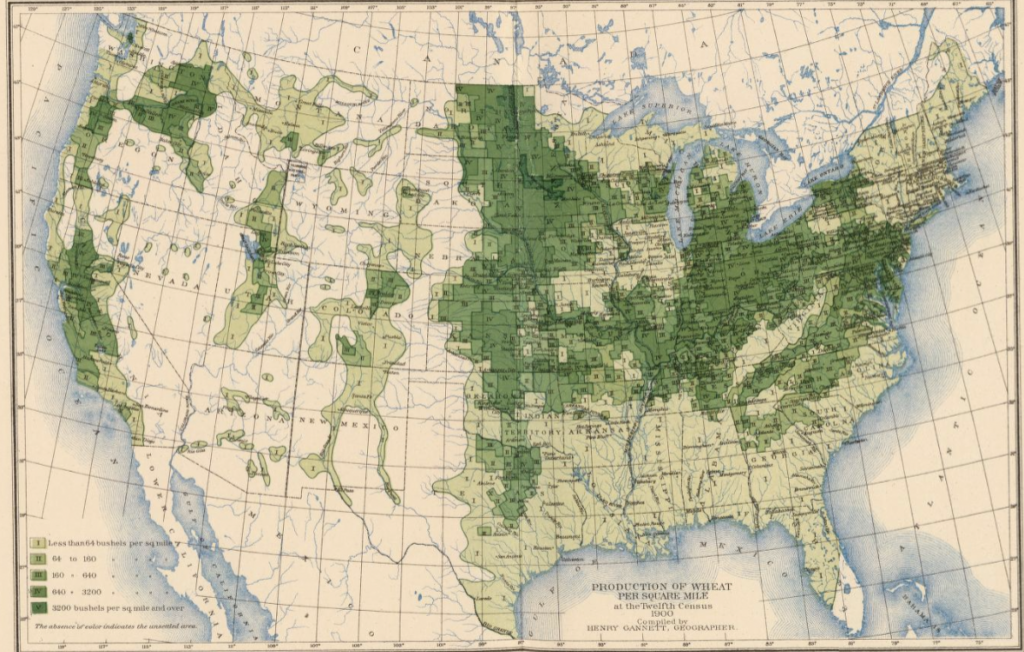In the mid to late 1800s, settlement in the Midwestern Prairie grew. As of result of the Homestead Act, settlers began establishing farms and settlements. According to Geoff Cunfer, “The federal government encouraged an expansion of production and provided
financial incentives for new plow-ups” 1. This area, known as the grasslands, had rich soil that made it easy to produce crops. Due to this, the grasslands were gradually plowed to fit this need of production.
As you can see, the percentage of grassland in this region significantly decreased during the early years of settlement and agricultural production. One of the main crops grown during this era was wheat. In the early 1900s, Wheat became an essential crop to the agricultural industry. According to Cunfer, “Generous rainfall accompanied the population and land boom” 2. As a result, wheat and other crop production increased. From this, farmers across the region saw an increase in wealth. Henry Gannett’s map of the 1900 Wheat Production highlights this.
Due to the increased use of land and population increase, crop production declined. By 1920, the lack of rainfall prevented crop production. Farmers began plowing more land for production. By continuously plowing fields, the soil became infertile. Amid the Great Depression, crop production was at a low, and many farmers suffered. During this, farmers began adapting. Cunfer writes, “the true period of adaptation was in the transition era, between about 1930 and 1940, when farmers first reached the natural limits of environment, passed them, and were pulled back by nature” 3. As a result of this land use, Midwestern farmers began adapting the harsh conditions that this region could bring.
The growing use of land for agriculture in the Midwest during the late 1800s – early 1900s, provided increased production in many crops such as Wheat. However, this also came with many challenges due to human practices, and a harsh climate. Land overuse and an increasing population in the 1920s created devastating effects through a decrease in production. As a result, farmers learned that land can be unforgiving. Through this, farmers began adapting.




This is a nice narrative the seamlessly merges the two mapping products, but I wonder if there are important differences as well…